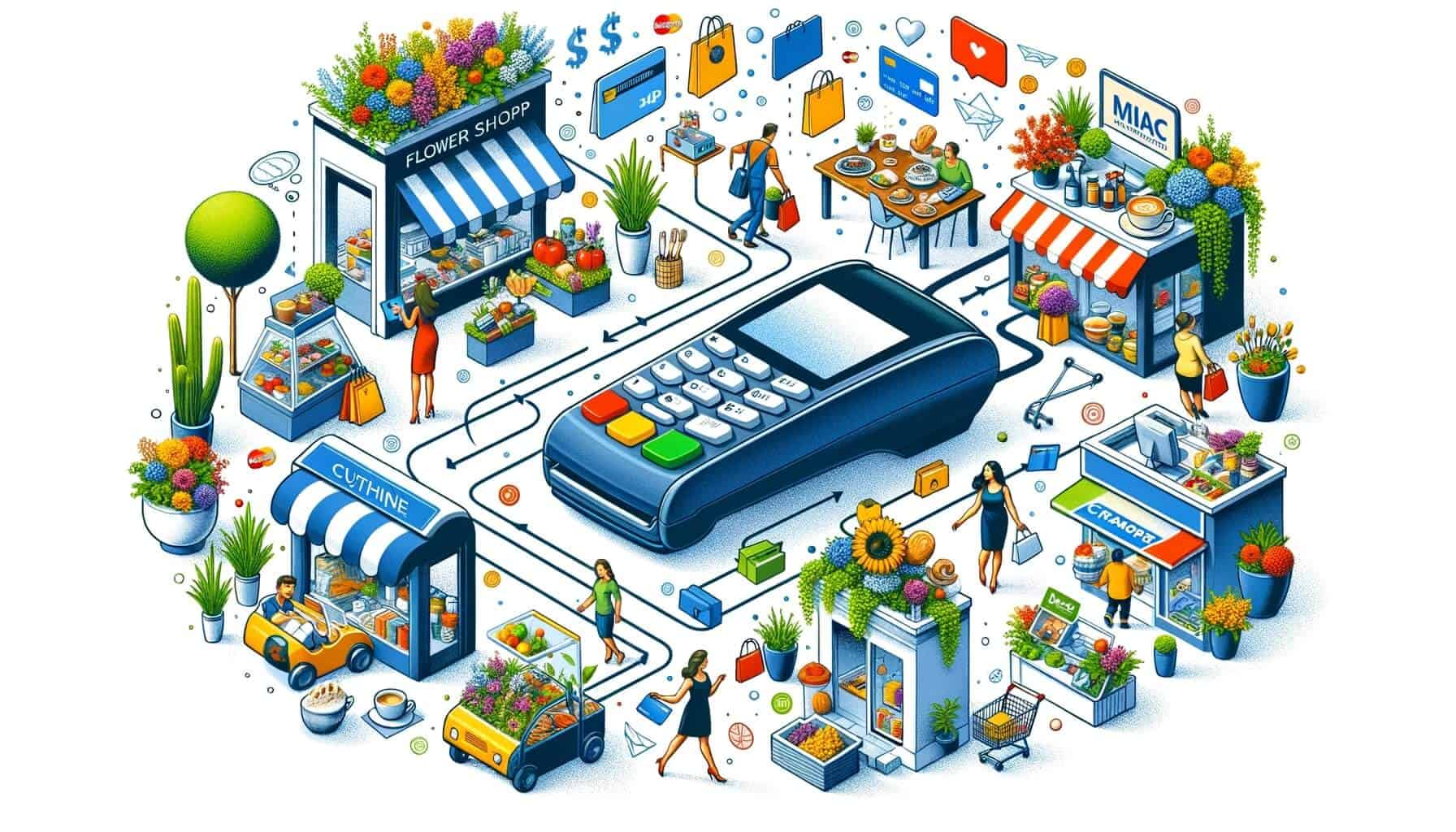
By Catharine Proctor January 29, 2025
In today’s digital age, credit card terminals have become an essential tool for businesses of all sizes. Whether you run a small local shop or a large multinational corporation, accepting credit card payments is crucial for staying competitive and meeting the needs of your customers.
In this comprehensive guide, we will explore the various aspects of credit card terminals, including their types, features, benefits, and how to choose the right one for your business. We will also provide a step-by-step guide on setting up a credit card terminal, best practices for accepting credit card payments, integrating terminals with point of sale systems, troubleshooting common issues, and answer frequently asked questions.
Understanding Credit Card Terminals: Types and Features
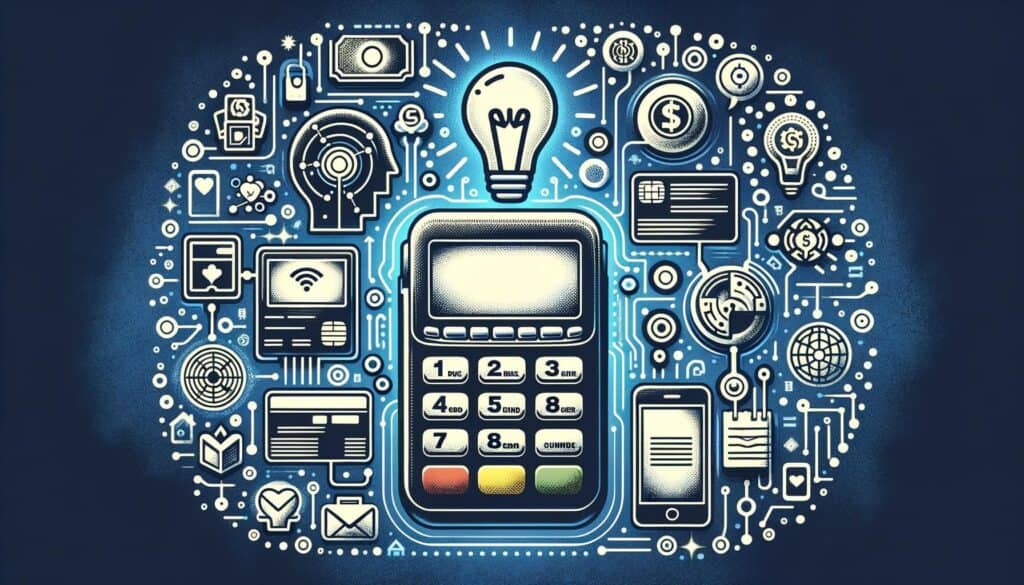
Credit card terminals come in various types and offer a range of features to cater to different business needs. The most common types include traditional countertop terminals, wireless terminals, mobile card readers, and virtual terminals. Traditional countertop terminals are stationary devices that connect to a phone line or internet connection and are ideal for businesses with a fixed location.
Wireless terminals, on the other hand, offer mobility and can be used in various locations within a business premises. Mobile card readers are small devices that can be attached to smartphones or tablets, allowing businesses to accept payments on the go. Virtual terminals, also known as online payment gateways, enable businesses to accept credit card payments through their website.
When choosing a credit card terminal, it is important to consider the features it offers. Some terminals support contactless payments, allowing customers to make payments by simply tapping their cards or mobile devices. Others may have built-in printers for issuing receipts, while some offer advanced security features such as encryption and tokenization to protect sensitive customer data. Additionally, terminals may have features like inventory management, customer loyalty programs, and integration with other business software.
Benefits of Having a Credit Card Terminal for Your Business
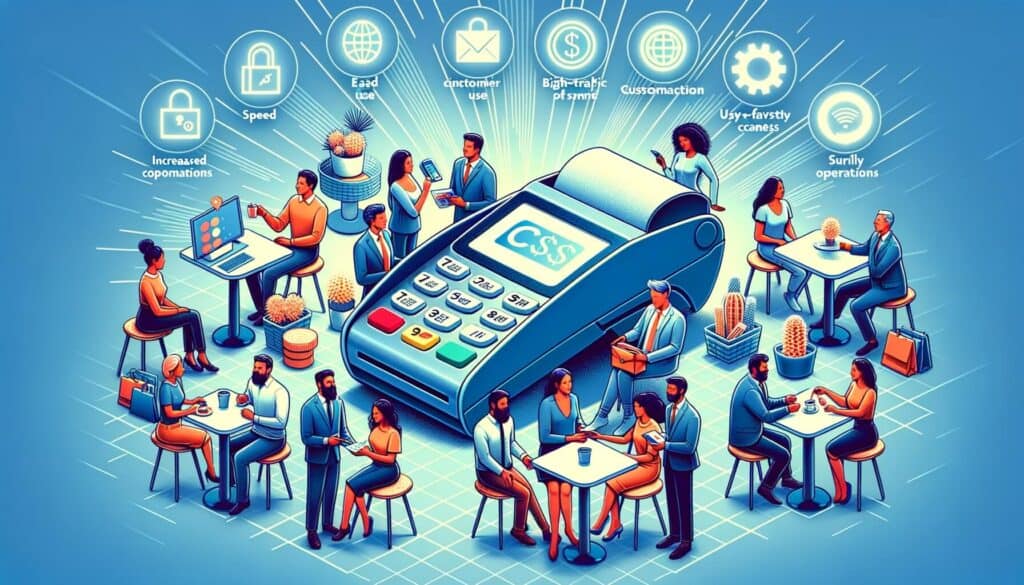
There are numerous benefits to having a credit card terminal for your business. Firstly, accepting credit card payments increases customer convenience and satisfaction. In today’s cashless society, many customers prefer to pay with their credit or debit cards rather than carrying cash. By offering this payment option, you can attract more customers and provide them with a seamless and convenient shopping experience.
Secondly, credit card terminals enable businesses to increase sales and revenue. Studies have shown that businesses that accept credit cards tend to have higher average transaction values compared to those that only accept cash. This is because customers are more likely to make impulse purchases and spend more when using credit cards. By accepting credit card payments, you can tap into this consumer behavior and boost your bottom line.
Furthermore, credit card terminals offer improved cash flow management for businesses. Unlike cash payments, credit card transactions are processed electronically, allowing businesses to receive funds quickly and securely. This eliminates the need for manual cash handling, reduces the risk of theft or loss, and simplifies accounting processes.
Lastly, accepting credit card payments enhances your business’s credibility and professionalism. Customers perceive businesses that accept credit cards as more established and trustworthy. This can help build customer loyalty and attract new customers who may be hesitant to shop at businesses that only accept cash.
How to Choose the Right Credit Card Terminal for Your Business
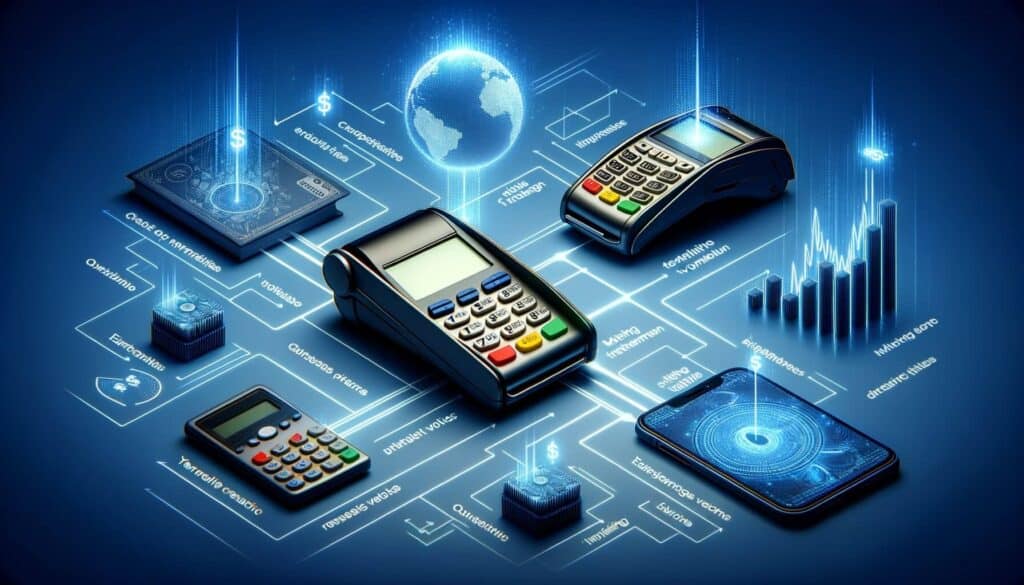
Choosing the right credit card terminal for your business is crucial to ensure smooth payment processing and meet your specific needs. Here are some factors to consider when making your decision:
1. Business Type and Size: Consider the nature of your business and its size. If you have a physical store, a traditional countertop terminal may be suitable. However, if you operate a mobile business or frequently attend events, a wireless or mobile card reader may be more appropriate.
2. Payment Volume: Evaluate your average monthly payment volume to determine the processing capacity you require. Some terminals have limitations on the number of transactions they can handle, so it is important to choose one that can accommodate your business’s needs.
3. Connectivity Options: Consider the available connectivity options for the terminal. While most terminals connect via internet or phone lines, some may offer additional options such as Bluetooth or Wi-Fi connectivity. Choose a terminal that aligns with your business’s infrastructure and connectivity preferences.
4. Security Features: Security should be a top priority when choosing a credit card terminal. Look for terminals that offer encryption and tokenization to protect customer data. Additionally, ensure that the terminal is Payment Card Industry Data Security Standard (PCI DSS) compliant.
5. Cost and Fees: Evaluate the upfront cost of the terminal, as well as any ongoing fees such as transaction fees, monthly fees, or equipment rental fees. Compare different providers and their pricing structures to find the most cost-effective solution for your business.
Setting Up a Credit Card Terminal: Step-by-Step Guide
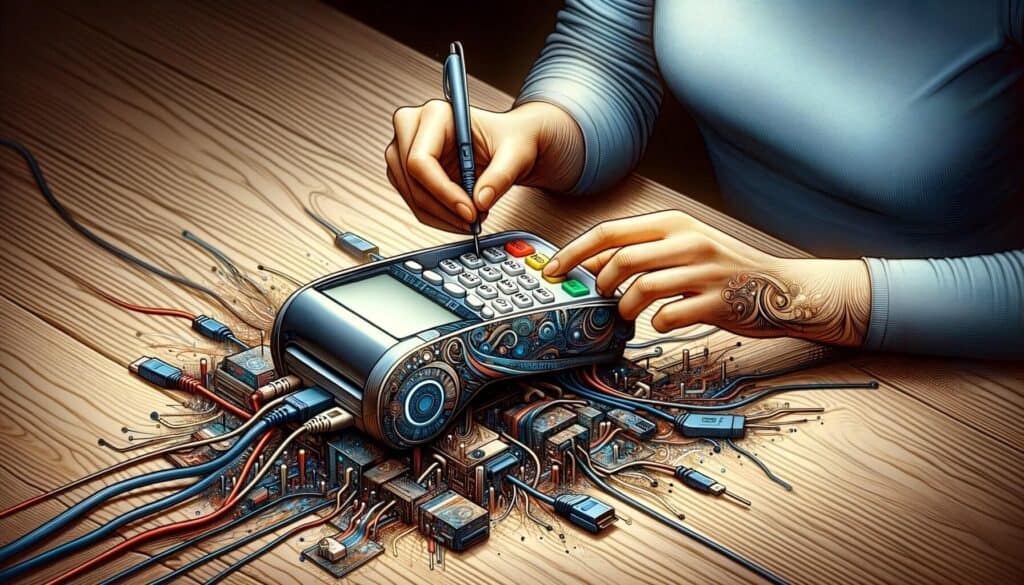
Setting up a credit card terminal may seem daunting, but with the right guidance, it can be a straightforward process. Here is a step-by-step guide to help you get started:
1. Choose a Payment Processor: Before setting up a credit card terminal, you need to select a payment processor. A payment processor acts as the intermediary between your business and the customer’s bank, facilitating the authorization and settlement of credit card transactions. Research different payment processors and choose one that offers competitive rates, reliable service, and supports the type of credit card terminal you plan to use.
2. Gather Required Information: To set up a credit card terminal, you will need to provide certain information to the payment processor. This typically includes your business’s legal name, address, contact information, tax identification number, and bank account details for funds settlement.
3. Purchase or Lease a Terminal: Once you have chosen a payment processor, you can purchase or lease a credit card terminal. If you opt to purchase, ensure that the terminal is compatible with your chosen payment processor and meets your business’s requirements. If you choose to lease, carefully review the terms and conditions, including any associated fees or obligations.
4. Connect the Terminal: Depending on the type of terminal you have, you will need to connect it to the appropriate network. For traditional countertop terminals, this may involve connecting to a phone line or internet connection. Wireless terminals may require a Wi-Fi or cellular connection, while mobile card readers typically connect to smartphones or tablets via Bluetooth or audio jack.
5. Configure the Terminal: Once the terminal is connected, you will need to configure it with the necessary settings. This may include inputting your business’s information, setting up tax rates, and configuring receipt options. Follow the manufacturer’s instructions or consult the terminal’s user manual for guidance on configuration.
6. Test the Terminal: Before accepting live transactions, it is important to test the terminal to ensure it is functioning correctly. Process a few test transactions using different payment methods to verify that the terminal can successfully authorize and process payments.
7. Train Staff: If you have employees who will be using the credit card terminal, provide them with training on how to operate it. Familiarize them with the terminal’s features, troubleshooting procedures, and best practices for accepting credit card payments.
Accepting Credit Card Payments: Best Practices and Security Measures
Accepting credit card payments comes with certain responsibilities and security considerations. Here are some best practices and security measures to follow:
1. Educate Staff: Train your staff on how to handle credit card transactions securely. Emphasize the importance of protecting customer data, including not storing cardholder information and ensuring that receipts are handled discreetly.
2. Verify Cardholder Identity: When accepting credit card payments, verify the cardholder’s identity by checking their signature or requesting identification. This helps prevent fraudulent transactions and protects your business from chargebacks.
3. Use EMV Chip Technology: EMV chip technology provides an added layer of security by encrypting transaction data and generating unique transaction codes for each payment. Ensure that your credit card terminal supports EMV chip technology to protect against counterfeit card fraud.
4. Implement PCI DSS Compliance: Ensure that your business is compliant with the Payment Card Industry Data Security Standard (PCI DSS). This includes implementing security measures such as firewalls, encryption, and regular security audits to protect customer data.
5. Secure Network Connections: If your credit card terminal connects to the internet or a network, ensure that the connection is secure. Use strong passwords, enable encryption, and regularly update the terminal’s software to protect against hacking and data breaches.
Integrating Credit Card Terminals with Point of Sale Systems
Integrating credit card terminals with point of sale (POS) systems can streamline your business operations and enhance the customer experience. POS systems are software solutions that manage various aspects of a business, including inventory management, sales reporting, and customer relationship management.
By integrating your credit card terminal with a POS system, you can consolidate payment processing and data management, saving time and reducing errors. Here are some key considerations when integrating credit card terminals with POS systems:
1. Compatibility: Ensure that your credit card terminal is compatible with your chosen POS system. Some POS systems have specific requirements or limitations when it comes to integrating with credit card terminals. Consult the POS system provider or the terminal manufacturer to confirm compatibility.
2. Seamless Integration: Look for credit card terminals that offer seamless integration with your POS system. This means that the terminal can communicate directly with the POS software, eliminating the need for manual data entry or reconciliation. This streamlines the payment process and reduces the risk of errors.
3. Data Synchronization: When integrating credit card terminals with POS systems, it is important to ensure that transaction data is synchronized accurately. This includes updating inventory levels, sales reports, and customer information in real-time. Test the integration thoroughly to verify that data synchronization is working correctly.
4. Reporting and Analytics: Integration with a POS system can provide valuable reporting and analytics capabilities. Look for credit card terminals that can generate detailed sales reports, track customer spending patterns, and provide insights into your business’s performance. This data can help you make informed decisions and optimize your operations.
Troubleshooting Common Issues with Credit Card Terminals
While credit card terminals are generally reliable, occasional issues may arise. Here are some common issues you may encounter and troubleshooting steps to resolve them:
1. Connection Problems: If your credit card terminal is not connecting to the network, check the network cables or Wi-Fi settings. Ensure that the network is functioning correctly and that the terminal is within range of the Wi-Fi signal. Restart the terminal and try reconnecting.
2. Card Reading Errors: If the terminal is having trouble reading credit cards, check for dirt or debris on the card reader. Clean the reader gently with a soft cloth or compressed air. If the issue persists, the card reader may need to be replaced or serviced.
3. Slow Transaction Processing: If transactions are taking longer than usual to process, check the internet or phone line connection. Slow internet speeds or network congestion can cause delays. Restart the terminal and ensure that the connection is stable.
4. Error Messages: If the terminal displays error messages, consult the user manual or contact the terminal manufacturer for guidance. Error messages may indicate issues with the terminal’s software, hardware, or configuration.
5. Printer Issues: If your credit card terminal has a built-in printer and is not printing receipts, check the paper roll and ensure that it is properly inserted. If the printer is jammed or not functioning, consult the user manual or contact the terminal manufacturer for assistance.
Frequently Asked Questions about Credit Card Terminals
Q1. Can I accept credit card payments without a credit card terminal?
A1. Yes, you can accept credit card payments without a credit card terminal by using virtual terminals or online payment gateways. These solutions allow businesses to accept credit card payments through their website or by manually entering card information.
Q2. How long does it take to set up a credit card terminal?
A2. The time it takes to set up a credit card terminal depends on various factors, including the type of terminal, the payment processor, and the complexity of your business’s requirements. In general, the setup process can range from a few minutes to a few days.
Q3. Are credit card terminals secure?
A3. Credit card terminals can be secure if proper security measures are implemented. Look for terminals that offer encryption, tokenization, and are PCI DSS compliant. Additionally, follow best practices such as educating staff, verifying cardholder identity, and securing network connections.
Q4. Can I use my existing POS system with a new credit card terminal?
A4. In most cases, you can integrate a new credit card terminal with your existing POS system. However, compatibility may vary depending on the POS system and terminal models. Consult the POS system provider or the terminal manufacturer for guidance on integration.
Q5. What are the costs associated with credit card terminals?
A5. The costs associated with credit card terminals can vary depending on factors such as the type of terminal, the payment processor, and any additional features or services. Costs may include upfront purchase or lease fees, transaction fees, monthly fees, and equipment maintenance fees.
Conclusion
In conclusion, credit card terminals are indispensable tools for businesses in today’s digital era. They offer numerous benefits, including increased customer convenience, higher sales and revenue, improved cash flow management, and enhanced credibility.
When choosing a credit card terminal, consider factors such as your business type and size, payment volume, connectivity options, security features, and cost. Setting up a credit card terminal involves selecting a payment processor, gathering required information, purchasing or leasing a terminal, connecting and configuring the terminal, testing it, and training staff.
Follow best practices and security measures when accepting credit card payments, such as educating staff, verifying cardholder identity, using EMV chip technology, implementing PCI DSS compliance, and securing network connections. Integrating credit card terminals with POS systems can streamline operations and provide valuable reporting and analytics capabilities.
Troubleshoot common issues with credit card terminals, such as connection problems, card reading errors, slow transaction processing, error messages, and printer issues. Finally, address frequently asked questions to provide further clarity and guidance to readers. By understanding the importance of credit card terminals and following best practices, businesses can optimize their payment processing, enhance customer satisfaction, and drive growth.